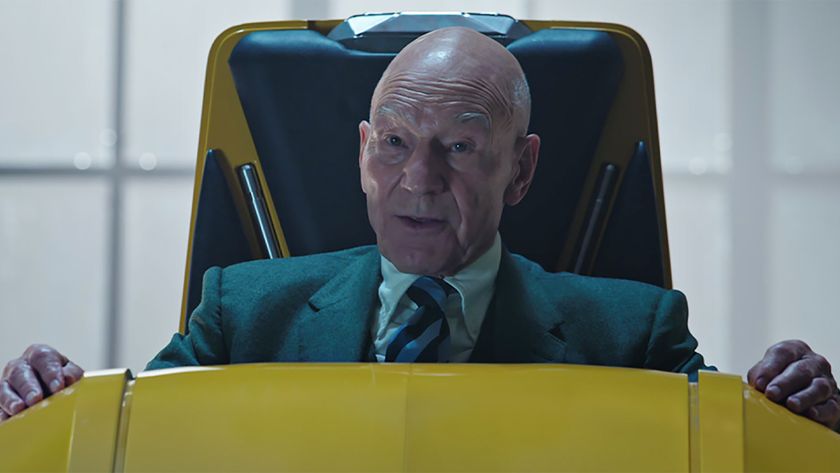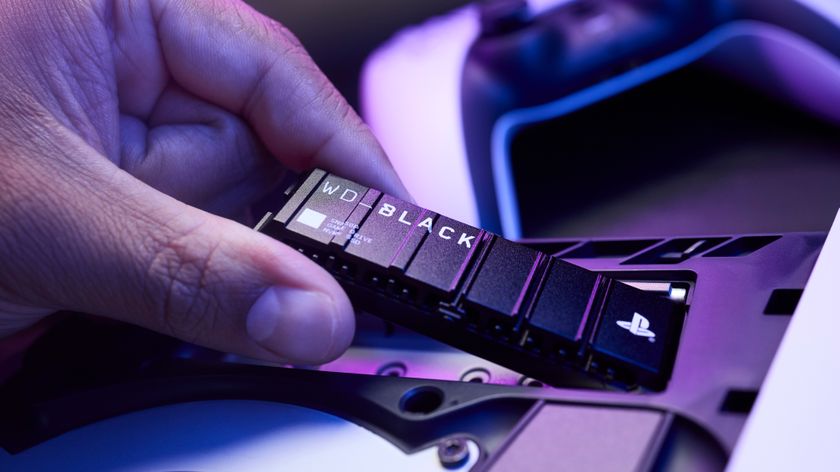Beginner's guide to collecting Space Marines in Warhammer 40K
Brother, we’ve got some xenos to purge. Get the flamer… the heavy flamer.
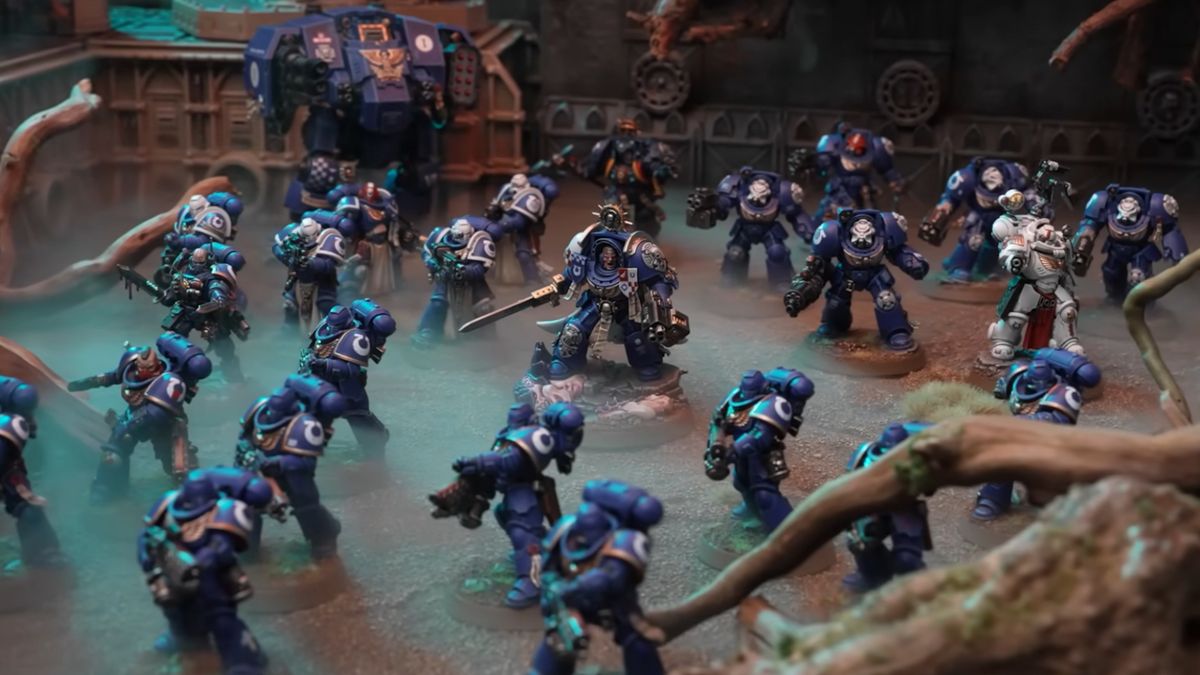
When you think of Warhammer 40K, you think of Space Marines. These enormous power-armored warriors are the poster boys for the game and the most popular faction by far.
With the imminent release of Warhammer 40,000: Space Marine 2 — the video game set in the Warhammer 40K universe — they're about to be even more popular. So, we figured there’s about to be a fresh wave of new recruits, er, I mean, excited hobbyists who are interested in starting Warhammer 40K and building a Space Marine army of their own.
With that in mind, we've put together a beginner's guide to Space Marines to explain who they are, how they play on the tabletop, and, more importantly, why you should start collecting them in Warhammer 40K.
Who are the Space Marines?
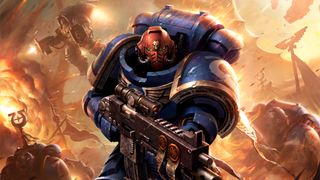
The Space Marines, also known as the Adeptus Astartes, are the Imperium of Man's greatest defenders. They're an army of genetically-enhanced super soldiers that are stronger, tougher, smarter, and just generally better than any regular human.
Space Marines are typically clad in huge suits of armor called power armor. They stride across the battlefield wielding their iconic weapon of choice, the boltgun — it’s so iconic that it’s got its own Doom-like video game, Warhammer 40,000: Boltgun. These aren't just big machine guns; boltguns fire rocket-propelled explosive shells in rapid succession. Between the guns and the armor, each Space Marine is effectively a walking tank.
Originally created by the Emperor of Mankind, the Space Marines were organized into 20 Founding Legions. Half of the Legions went a bit evil during the Horus Heresy, a massive civil war that took place about 10,000 years ago in the 40K universe. Since then, the Founding Legions were split into thousands of smaller Chapters, each containing 1,000 Space Marines.
These Chapters include descendants of the Founding Legions like the Ultramarines, Blood Angels, and Dark Angels, along with countless successor Chapters who were spawned from one of the original Legions. Notable examples of these successors include the Black Templars and Flesh Tearers, derived from the Imperial Fists and Blood Angels Chapters, respectively.
Sign up to the 12DOVE Newsletter
Weekly digests, tales from the communities you love, and more
Each Chapter has their own distinctive color scheme, which offers you a ton of creative options when painting up your models. Beyond the aesthetic differences, each Chapter also has their own unique personality and style of combat. Some prefer melee combat (Blood Angels), others specialize in ranged destruction (Imperial Fists), while others are all about using stealth and subterfuge (Raven Guard).
How to start collecting Space Marines
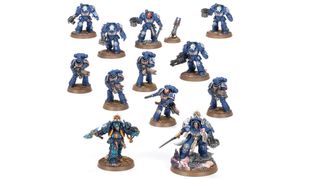
As the main faction in the game, there are way more Space Marine model options to buy than for any other 40K faction, by a considerable margin. This can result in a bit of decision paralysis for prospective players who click onto the Warhammer store and see hundreds of options to choose from.
Combat Patrol: Space Marines contains a great starter force for new players, as it comes with a good variety of units that are almost always going to be useful in games. It contains a squad of five Infernus Marines (guys with flamethrowers), 5 Terminators (dudes in even tougher armor), and two Terminator armor-wearing characters to lead your force (a Captain and Librarian).
However, and this is very important, don't buy Combat Patrol: Space Marines!
It costs $168 / £100, which is decent value for the miniatures inside, but you can get the exact same group of models — plus a bunch of Tyranids, and the core rules handbook, dice, and other accessories — in the Warhammer 40K Starter Set, which costs just $112 / $67.50. This can become even better value if you find a Tyranid player to split the cost of the box with, netting you a Space Marine starter force for $56 / £33.75.
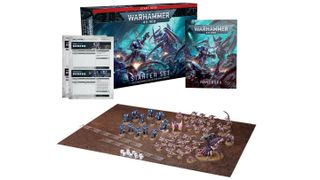
If the models in that box set don't take your fancy, a lot of the special Space Marine Chapters also have their own Combat Patrol boxes for $168 / £100. While these sometimes contain Chapter-specific miniatures, they're primarily filled with generic units that any Space Marine player can use. These alternative box sets include:
- Combat Patrol: Space Wolves
- Combat Patrol: Dark Angels
- Combat Patrol: Black Templars
- Combat Patrol: Blood Angels (currently being replaced as Blood Angels are getting a new Codex soon!)
Alongside your models, you'll need some tools, paints, and paintbrushes to turn them from gray plastic into a fearsome fighting force. You'll also need to choose a paint scheme, which is a daunting challenge in itself; either paint them up as one of the existing Chapters or you can come up with your own unique heraldry. Have a look through Codex: Space Marines for inspiration and see if any of them catch your eye.
Once you've built up your first Combat Patrol box, you can start adding other units to your force. Try to get a variety of things to see what you enjoy building and painting. Most of the starter boxes are solely composed of infantry, so adding a vehicle to your force is a solid next step. The best advice I can offer to burgeoning Warhammer players is to buy the models you like the look of, and don't worry too much about which units are strong at the moment.
This is because the competitive meta of Warhammer 40K changes constantly, with new factions, mission decks, and quarterly rules updates vastly shifting the balance of power. If you buy a 2,000 point army based on what's strong now, by the time you've got it built and painted, there's a good chance they'll have been nerfed into oblivion.
Remember the Warhammer player's mantra: rules are temporary, beautiful Warhammer models are forever.
How to play Space Marines in Warhammer 40,000
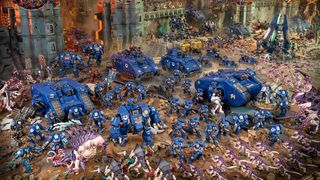
Once you've built up a big enough force to start playing games, it's time to get your Angels of Death on the table and start purging some heretics. But, how do you actually do that?
Well, the first thing you'll need to do is pick up Codex: Space Marines, an essential guidebook which contains all the rules you need to play your army in games of 40K (alongside the core game rules which are available for free on the Warhammer Community website). It contains datasheets for your units along with your faction rules, and also a bunch of detachments, each with their own unique stratagems and enhancements that change the way your army plays.
Space Marines are a bit of a jack-of-all-trades army within Warhammer 40K, which makes sense; they're the first army most players pick up and as such they're the perfect opportunity to show off a little bit of everything. They're pretty good at shooting, fighting, and taking a punch, but they're not the best at any one thing.
Their main army rule is Oath of Moment: this lets you pick one enemy unit at the start of every battle round and your army gets full rerolls to hit against them until the end of the battle round. Basically, you point at a thing and say "I don't want to see that thing in front of me anymore". This rule makes Space Marines excellent at bringing down individual tough targets, although it won't be nearly as effective if you're facing an opponent who has multiple small units, instead of a few big ones.
Alongside this main army rule, you have access to seven detachments which each have their own additional rules to help you tailor your force to suit your playstyle.
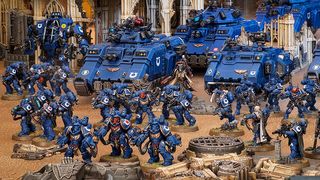
The Gladius Task Force is the "vanilla" Space Marine detachment, and it's probably the strongest one of the lot. It has a suite of strong stratagems and enhancements, along with a versatile detachment rule called Combat Doctrines, which gives you access to three powerful abilities that you can use once per game. Whether you want to play an army that favors shooting or close combat, infantry or tanks — the Gladius Task Force will have your back.
The other detachments are more specialized: the Ironstorm Spearhead is all about tanks, while the Stormlance Task Force is all about fast units like bikes and jetpack Marines. You should look to match up the units you're bringing with the detachment that will benefit them the most.
On top of the different detachments in the base Space Marine Codex, you also have access to the so-called divergent Chapters that we mentioned earlier. These Chapters are sufficiently unique to warrant their own Codex supplements — complete with their own rules, detachments, and special units. Since your paint scheme doesn't actually lock you into playing a specific subfaction, there is nothing to stop you adding a Dark Angels-specific unit to your force and playing your bright red Space Marines as Dark Angels for a game.
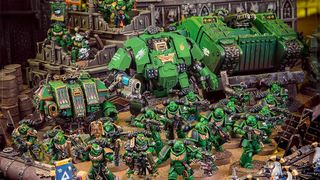
Once you've got a few games under your belt, you might decide that you're ready to get into some truly competitive play and hit up some tournaments.
If you want to get seriously into the tournament scene, it's a good idea to keep an eye on the meta by seeing what lists are doing well at the moment. Goonhammer is a Warhammer 40K site that posts round-ups of all the big tournaments every week, showcasing the top performing lists and explaining how they work. From this you can learn what the top lists are at the moment, and use this information to craft your own list.
As we said before, the Warhammer 40K meta is constantly changing thanks to balance updates and new releases. However, sometimes all it takes is an unlikely hero to win a big event with a list no one expected, and all of a sudden BOOM — that list is everywhere and the whole competitive scene has flipped around.
Just copy-pasting someone's tournament-winning list from Goonhammer won't be enough though. You're going to need to "git gud" as it were, and that can only come from experience. Play games… play lots of games. Enough games to fill out an '80s movie montage. Familiarize yourself with your army and what it can do, while also learning what every other faction in the game is all about too. Play against good players, get absolutely battered by them, and then learn from those losses.
It sounds like a lot of work — and it is — but you have nothing to be afraid of, because you are a Space Marine, and the Emperor's Space Marines shall know no fear!

Ian Stokes is an experienced writer and journalist. You'll see his words on 12DOVE from time to time, and he works as Entertainment Editor at our sister site Space.com.







